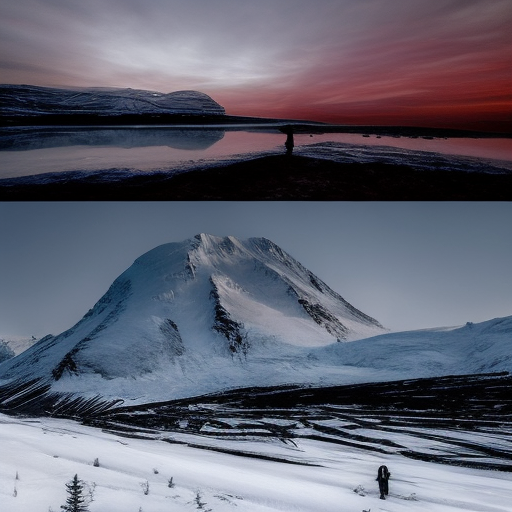The Thing by John Carpenter: A Terrifying Battle for Survival in the Antarctic
Main Cast and Crew:
- Director: John Carpenter
- Writer(s): Bill Lancaster (screenplay), John W. Campbell Jr. (short story)
- Key Actors: Kurt Russell as R.J. MacReady, Wilford Brimley as Dr. Blair, Keith David as Childs, Donald Moffat as Garry, Richard Dysart as Dr. Copper
- Music Director: Ennio Morricone
- Director of Photography: Dean Cundey
- Producers: David Foster and Lawrence Turman
In the remote Antarctic outpost of U.S. National Science Institute, a group of twelve researchers are about to face a horrifying battle for survival against a shape-shifting extraterrestrial creature in John Carpenter’s The Thing. When a Norwegian helicopter chasing a dog lands at the base, the researchers witness a violent confrontation that leaves the Norwegians dead and their helicopter destroyed. Suspecting something sinister, the team’s pilot, R.J. MacReady, and Dr. Copper visit the Norwegian base, discovering a charred humanoid corpse and evidence of a massive excavation site.
Back at their own base, the researchers soon realize that the dog is not what it seems. The creature, capable of perfectly imitating any living organism, begins to infiltrate the group, causing paranoia and distrust among the team members. As the creature assimilates its victims, the researchers must find a way to identify and destroy it before it escapes the Antarctic and threatens all of humanity.
The film masterfully builds tension and suspense as the researchers become increasingly isolated and suspicious of each other. The claustrophobic setting of the Antarctic outpost intensifies the sense of dread and hopelessness, while the chilling score by Ennio Morricone adds to the atmosphere of unease.
Central Themes and Motifs:
The Thing explores themes of paranoia, trust, and the fragility of human relationships. As the researchers struggle to determine who among them is still human and who has been assimilated by the creature, the film delves into the dark corners of the human psyche. The fear of the unknown and the inability to trust one’s own senses are central motifs that drive the narrative forward.
The film also raises questions about identity and what it means to be human. The creature’s ability to perfectly imitate its victims blurs the lines between friend and foe, forcing the characters to confront their own humanity and the nature of their existence.
Reception and Legacy:
Upon its release in 1982, The Thing received mixed reviews from critics. While some praised its special effects and Carpenter’s direction, others found the film excessively violent and lacking in character development. However, over time, the film has gained a cult following and is now regarded as a classic in the horror genre.
The film’s practical effects, created by Rob Bottin, are often cited as a highlight, with the creature’s gruesome transformations and grotesque forms leaving a lasting impact on audiences. Despite its initial commercial failure, The Thing has since been recognized for its innovative use of practical effects and its influence on subsequent horror films.
Although The Thing was not nominated for any major awards, its legacy can be seen in the numerous homages and references made in popular culture. The film has inspired video games, comic books, and even a 2011 prequel. Its enduring popularity is a testament to its ability to terrify and captivate audiences.
Recommendation:
The Thing is a must-watch for fans of psychological horror and science fiction. With its tense atmosphere, gripping storyline, and groundbreaking practical effects, the film continues to be a benchmark for the genre. Prepare to be on the edge of your seat as you witness the battle for survival in the desolate Antarctic outpost.
Memorable Quote:
“I know I’m human. And if you were all these things, then you’d just attack me right now, so some of you are still human. This thing doesn’t want to show itself, it wants to hide inside an imitation. It’ll fight if it has to, but it’s vulnerable out in the open. If it takes us over, then it has no more enemies, nobody left to kill it. And then it’s won.” – R.J. MacReady












